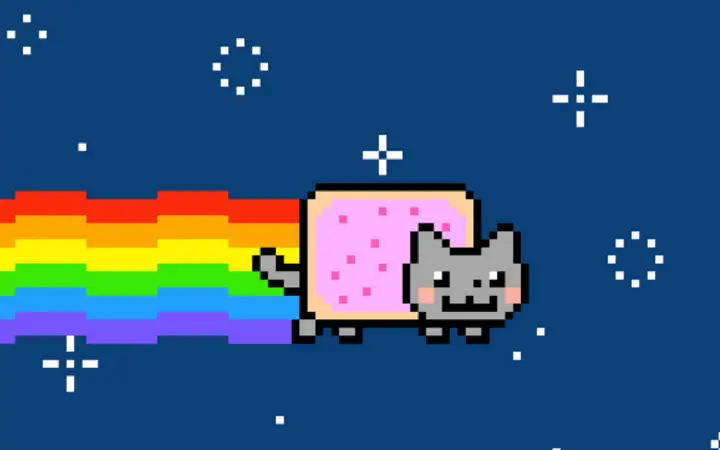courtesy forbes.com
If you want to be an Internet superstar, you’ll need a cat. Use your smart phone to make videos of your cat. Tweet regularly about your cat. Maybe even create a Facebook page for your cat.
What is it about cats and the internet? Nyan Cat? Nora the PianoCat?
Perry Stein took a stab at this subject in The New Republic earlier this year. “Most of us would simply plead that we happen to think of cats, and their various digital reproductions, as ‘cute,’” Stein wrote, “but the sheer magnitude of their popularity suggests that there’s something more than a purely subjective phenomenon at work.”
Stein turned to natural and social scientists. Among the answers he discovered:
- Cats have big eyes, small noses, and a head shape that resembles human babies’. It is an evolutionary thing: cats trigger our instinctual desire to nurture our young.
- “For cat owners, the dog park is the internet.” Where else can you take your feline obsession and bond with other humans that are fixated on cats?
These answers entertain, but hardly convince. For an alternative, I turned to the Jungian/Archetypal psychology.
Following in the footsteps of Sigmund Freud’s psychoanalytic movement, Swiss psychiatrist Carl Jung used ancient mythology to find meaningful explanations for modern experiences. In the case of cats, this seems like a promising strategy.
Although historians and archeologists call them icons, artifacts, and talismans, it may be that the first cat memes appeared in ancient Egypt.
Bastet was the Egyptian cat-headed goddess. She was associated with lunar energies: childbirth, fertility, and the feminine. In Greek mythology, the goddess Artemis is said to have turned herself into a cat in order to take refuge in the moon. And the Norse goddess of fertility, Freyja, had a carriage that was pulled by two cats. In the middle ages, cats became associated with the devil.
The Jungian analyst Marie-Louise von Franz, in her book, The Cat: A Tale of Feminine Redemption, points to the independence of cats. Unlike dogs, who look at us with codependent and sentimental puppy eyes, cats appear to flaunt their autonomy: they ask for attention with a kind of aloofness that tells us that they desire human companionship, but they don’t need it. Thus, Von Franz explains, the persecution of witches was also a persecution of women’s psychological independence. “The projection fell especially onto the black cat,” she writes, “which is still said to bring bad luck when it crosses one’s path.”
On the Internet, the symbolic cat seems to have lost her negative associations. Now, she appears in ironic memes:
[fusion_builder_container hundred_percent=”yes” overflow=”visible”][fusion_builder_row][fusion_builder_column type=”1_1″ background_position=”left top” background_color=”” border_size=”” border_color=”” border_style=”solid” spacing=”yes” background_image=”” background_repeat=”no-repeat” padding=”” margin_top=”0px” margin_bottom=”0px” class=”” id=”” animation_type=”” animation_speed=”0.3″ animation_direction=”left” hide_on_mobile=”no” center_content=”no” min_height=”none”][soliloquy id=”2842″]
Cat memes can be understood as modern icons that celebrate and worship the symbolic cat. They seem to emphasize how cats are like humans. But the unconscious message might be more profound. They might be about the way humans are like cats.
Perhaps we’re collectively celebrating the independence with which our Internet devices allow us to connect to others. The web allows us to be like felines, connecting on our own terms and at our own leisure.
Perry Stein may be right. The popularity of cats on the Internet may be more than just entertainment and cuteness. It may even be about more than evolutionary biology and social science.
Cat memes might represent a shift in our collective mythology and an increased psychological tolerance.
jordan shapiro is author of freeplay: a video game guide to maximum euphoric bliss and co-editor of occupy psyche: jungian and archetypal perspectives on a movement.
[/fusion_builder_column][/fusion_builder_row][/fusion_builder_container]
